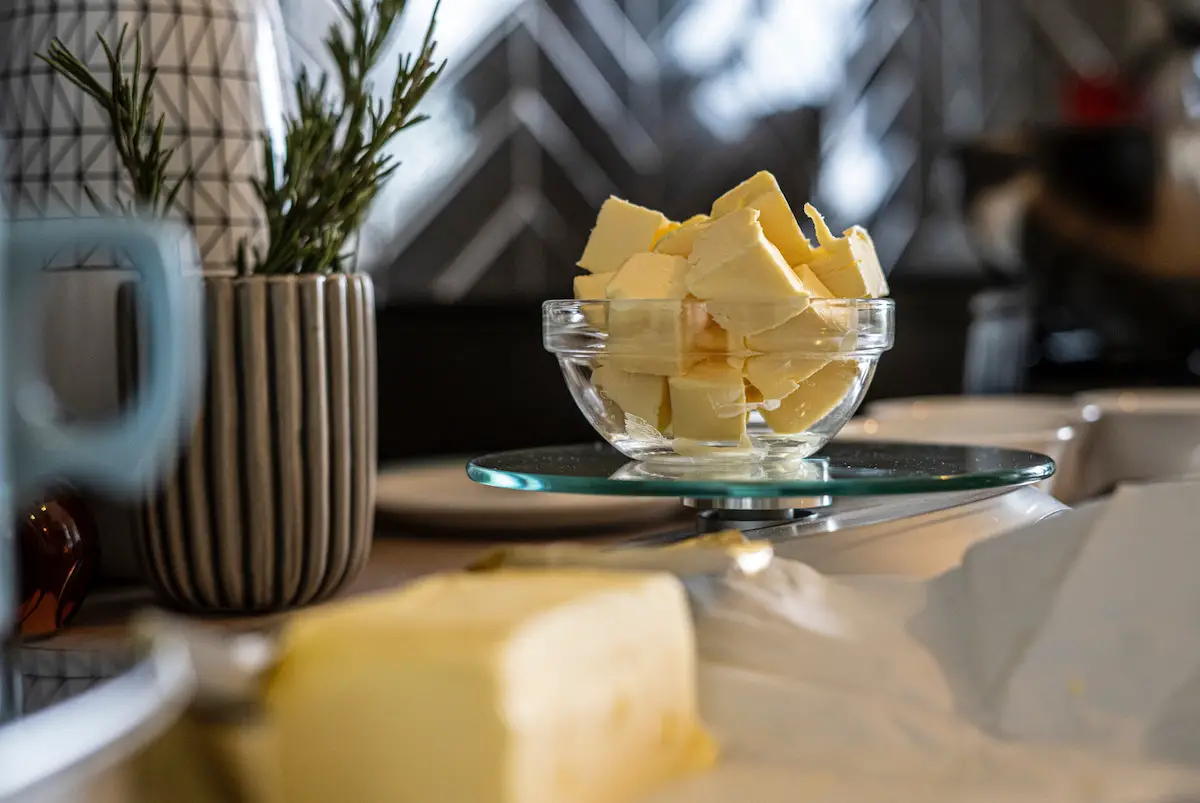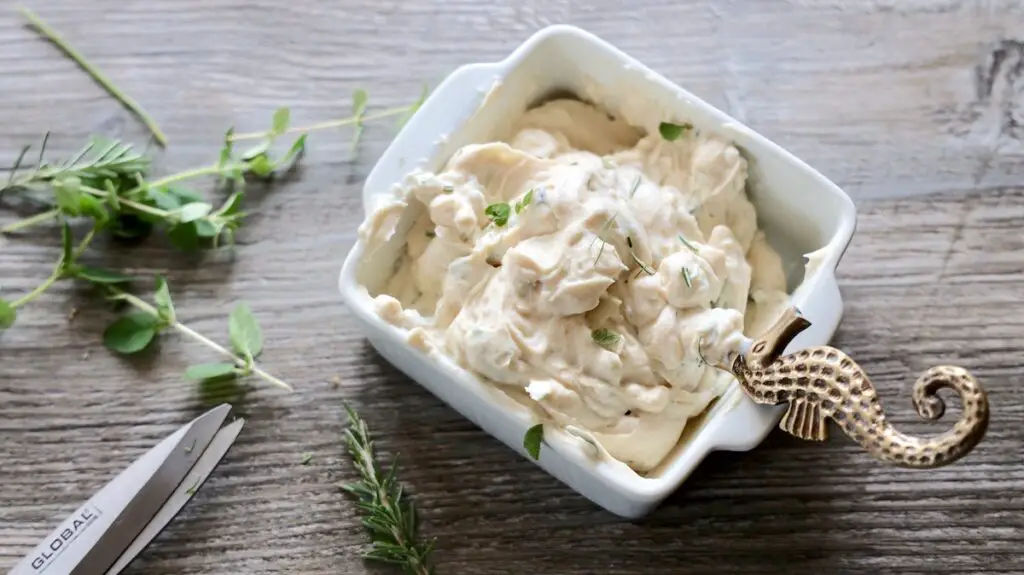Cream Cheese vs Butter – What's The Difference?
Norah Clark
Butter and cream cheese have the same nutrients and ingredients, so they are frequently used to substitute for one another. Cream cheese is more suitable for those looking to decrease calories and fats in their diets, but both have benefits.
If you’re looking to become more aware of your food choices and perhaps cut down on the fats you consume in your diet, then we’ve included everything you should be aware of to help you understand the distinctions between them and the differences between them!
Cream Cheese vs Butter
When comparing cream cheese and butter, it’s essential to note that various types exist, including full-cream butter, light butter, full-cream cheese, and reduced-fat cream cheese.
Each has unique nutritional values and ingredients, so you can choose based on taste preferences or health considerations.

Cream cheese and butter are both dairy products, but they have different textures and flavors.
Cream cheese is soft and spreadable, with a tangy flavor, while butter is solid at room temperature and has a creamy, rich flavor.
Cream cheese is made from a mixture of cream and milk, while butter is made from churning cream or milk to separate the fat from the liquid.
Read also: Mold On Butter – What’s The Cause And What To Do
Ingredients
Butter is made from sweet cream and is often salted, while cream cheese is produced using milk, pasteurized cream, stabilizers, salt, and cheese cultures.
Butter, made by churning cream, is simple and contains more fats, contributing to its creamy taste and texture.
Cream cheese is a blend of milk and cream with other ingredients. Full-fat butter and cream cheese have the simplest ingredients, while reduced-fat and light versions contain extra components.
Be sure to read the labels.
Nutritional Benefits
Examining the nutritional content of cream cheese and butter can help you determine which is better for your needs:
- Calories: Butter is higher in calories (about 717 per 100g) than cream cheese (around 350 per 100g).
- Carbohydrates: Both have low carbohydrate levels, with butter containing 0.06g per 100g and cream cheese 5.5g per 100g.
- Sugar: Both are low in sugar, with butter containing 0.06g per 100g and cream cheese about 3.8g per 100g.
- Protein: Cream cheese is higher in protein, containing 6.2g per 100g, while butter has 0.85g per 100g.
- Saturated Fat: Both are high in saturated fats, but butter has more (50.5g per 100g) than cream cheese (20.2g per 100g).
- Trans Fat: Unsalted butter has less trans fat than cream cheese, which contains about 1.2g per 100g.
- Calcium: Cream cheese is a better calcium source, containing 97mg per 100g, compared to butter’s 24mg per 100g.
- Potassium: Cream cheese contains more potassium (132mg per 100g) than butter (24mg per 100g).
Which Is Healthier: Cream Cheese or Butter?
Cream cheese is generally a healthier option due to its lower calorie and fat content and higher protein levels.
It can be an ideal spread or dip for those on a calorie-restricted or high-protein diet.
If you prefer butter’s flavor but want less fat, light butter is a tasty alternative.
Butter is often used when frying food, as an ingredient in baking, as part of a flour roux for sauces, and as a base spread on any form of bread or cake.
Cream cheese is used mainly as a spread but is used a lot in baking things like cheesecake.

Frequently Asked Questions
Is cream cheese healthier than butter?
Cream cheese and butter are both high in fat and calories, but cream cheese contains less saturated fat than butter. However, cream cheese also contains more additives and preservatives than butter. In moderation, both can be part of a healthy diet, but it’s important to balance your intake of fats and calories.
Can you replace butter with cream cheese?
Cream cheese can be used as a substitute for butter in some recipes, but it may not always produce the same results. Cream cheese has a different texture and flavor than butter, so it’s best to use it as a replacement in recipes that can handle the change, such as in frosting or dips.
Is cream cheese a healthy fat?
Cream cheese is high in fat and calories, but it can still be part of a healthy diet when consumed in moderation. It contains some beneficial nutrients, such as protein and calcium, but it’s also high in sodium and saturated fat. It’s best to balance your intake of cream cheese with other healthy fats, such as nuts and seeds, and limit your overall intake of high-fat foods.
Is cream cheese actually butter or cheese?
While cream cheese differs significantly in taste, appearance, and texture from other cheeses like cheddar or Gouda, it is still classified as a cheese according to the FDA.
What is Philadelphia Cheese?
Philadelphia cheese is a popular brand of cream cheese, recognized for its smooth, rich, and delicious taste. It is a widely enjoyed type of cream cheese available in the market. Cream cheese is popular in cheesecakes.
Can Cream Cheese Be Eaten On Its Own?
Although it’s possible to eat cream cheese by itself, its flavor is enhanced when combined with other ingredients. Cream cheese is often spread on bagels, used in baking, or serves as a dip for fresh-cut vegetables and tortilla chips.











1 comment
Loved this very informative article and I learned valuable information from it. Thank you!
I was a bit surprised to see one main difference of butter not listed: cooking! You can cook, Sautee, grill, bake, etc…with butter, but not cream cheese. I assume that’s because there are no cheese cultures, higher fat content and the moisture is easily dissipated for higher temp cooking.